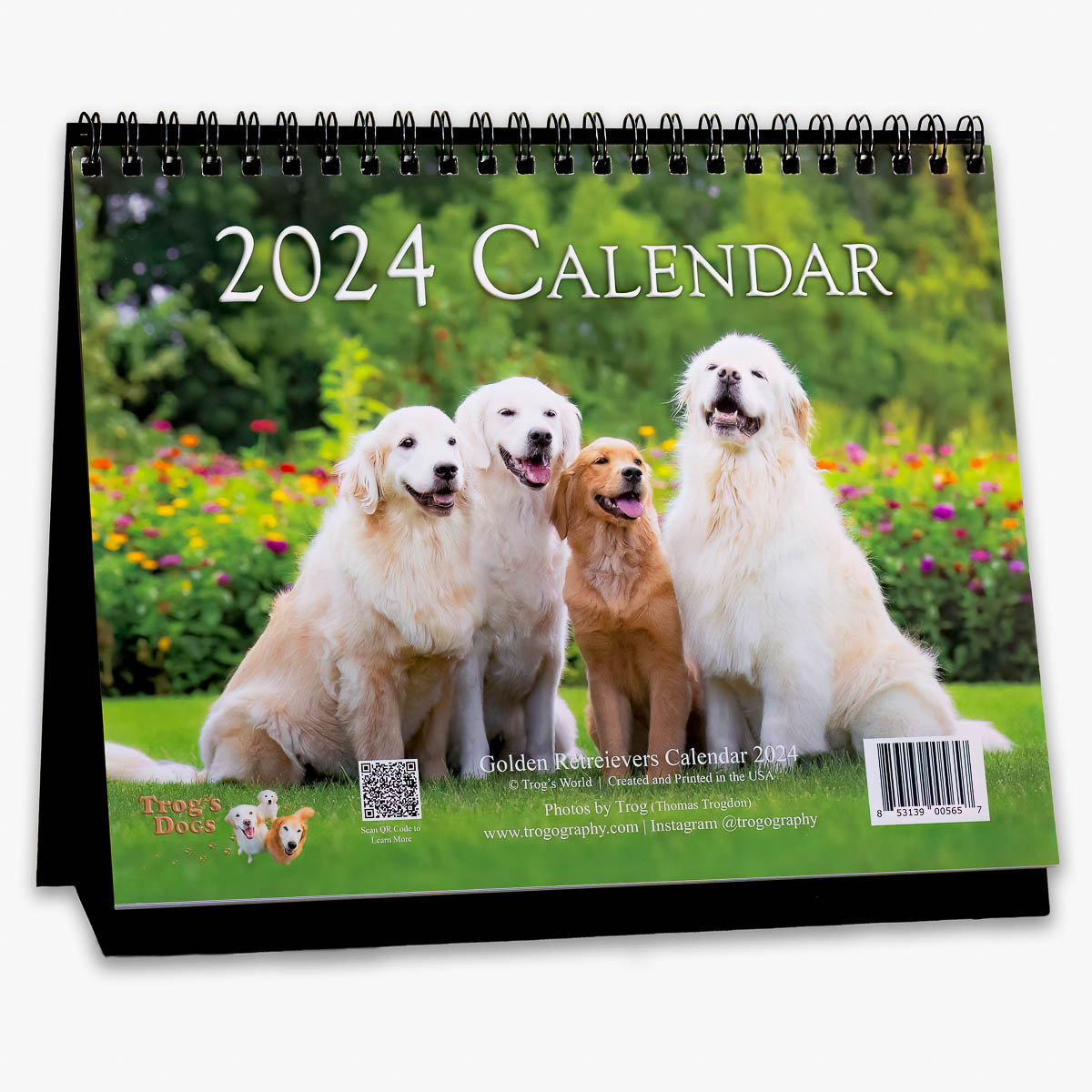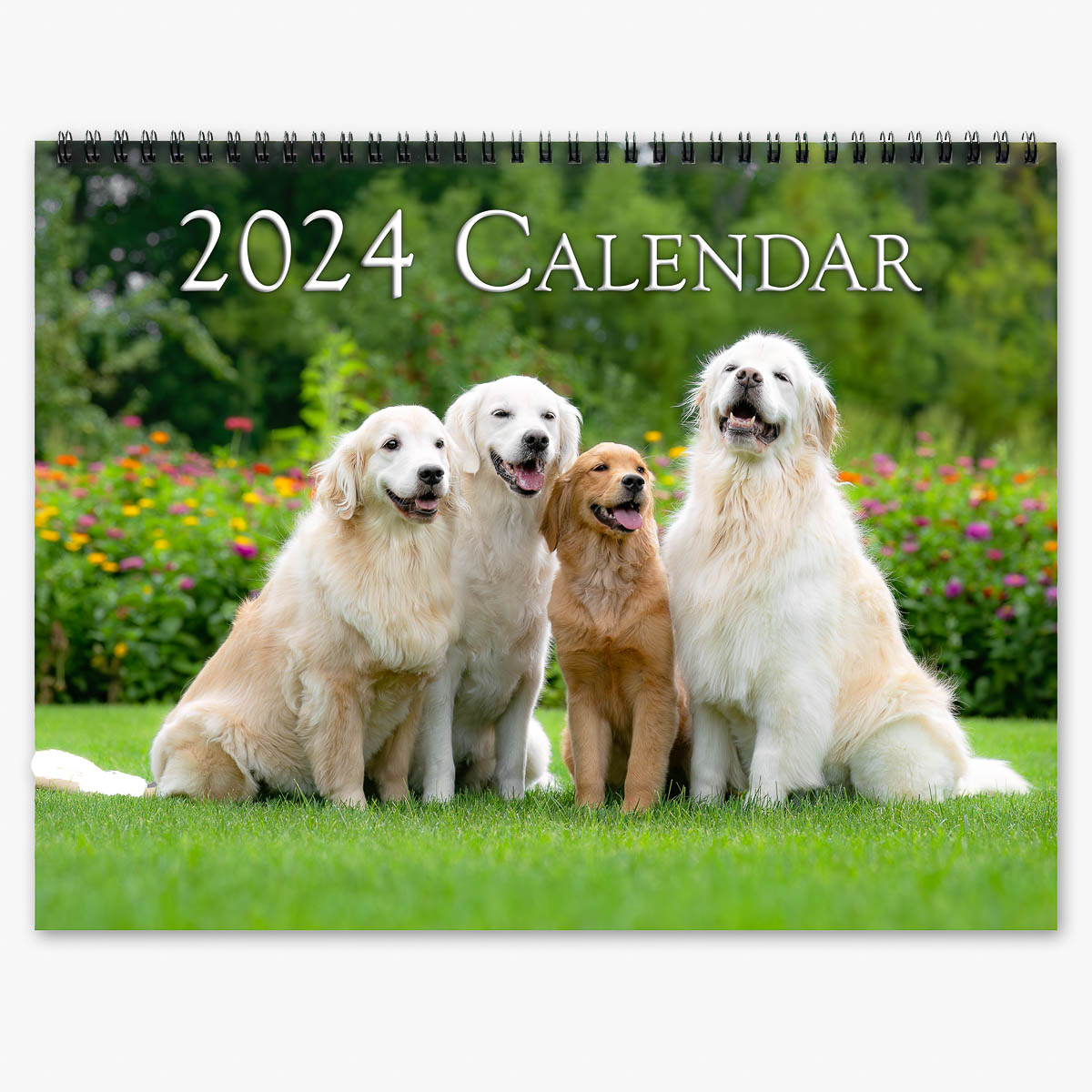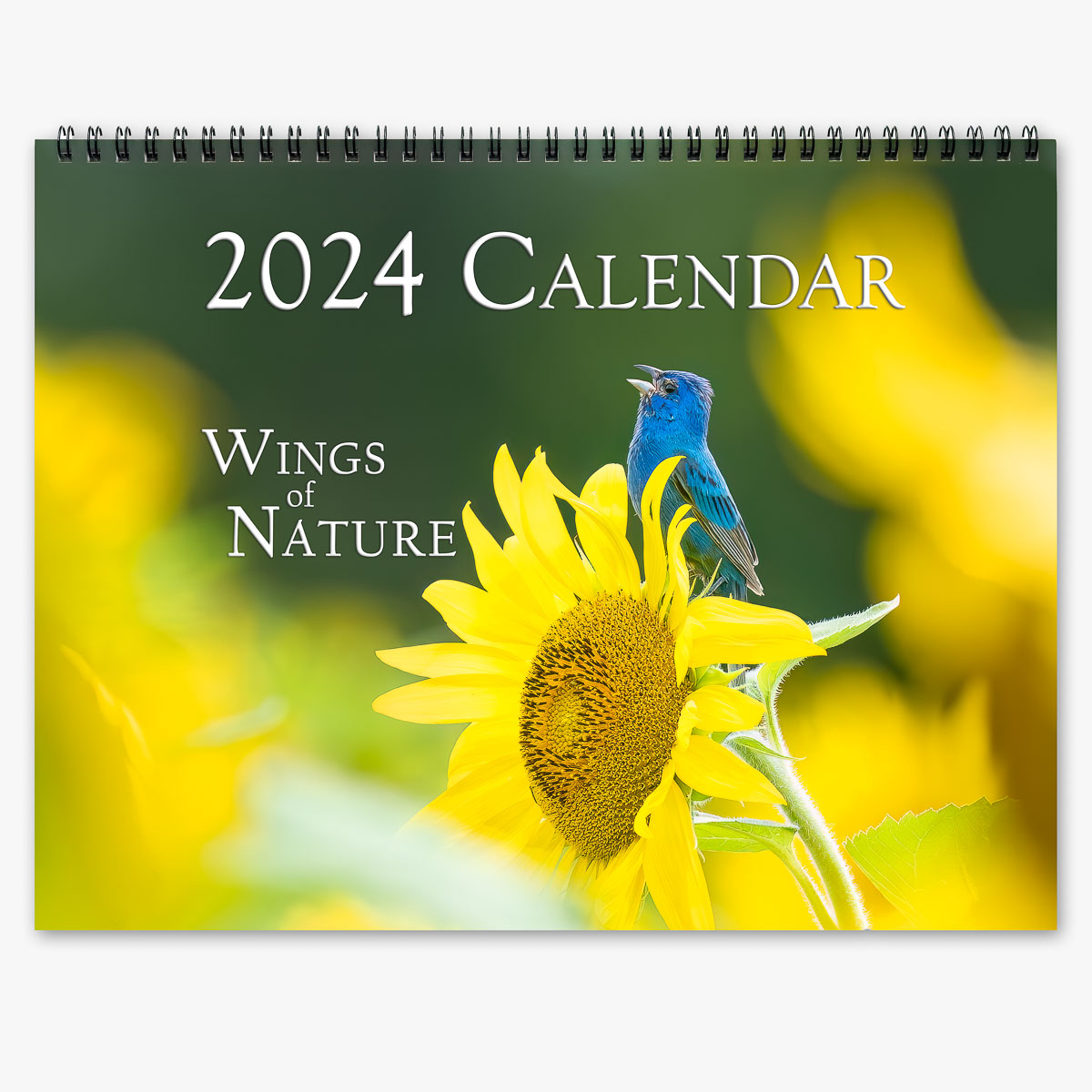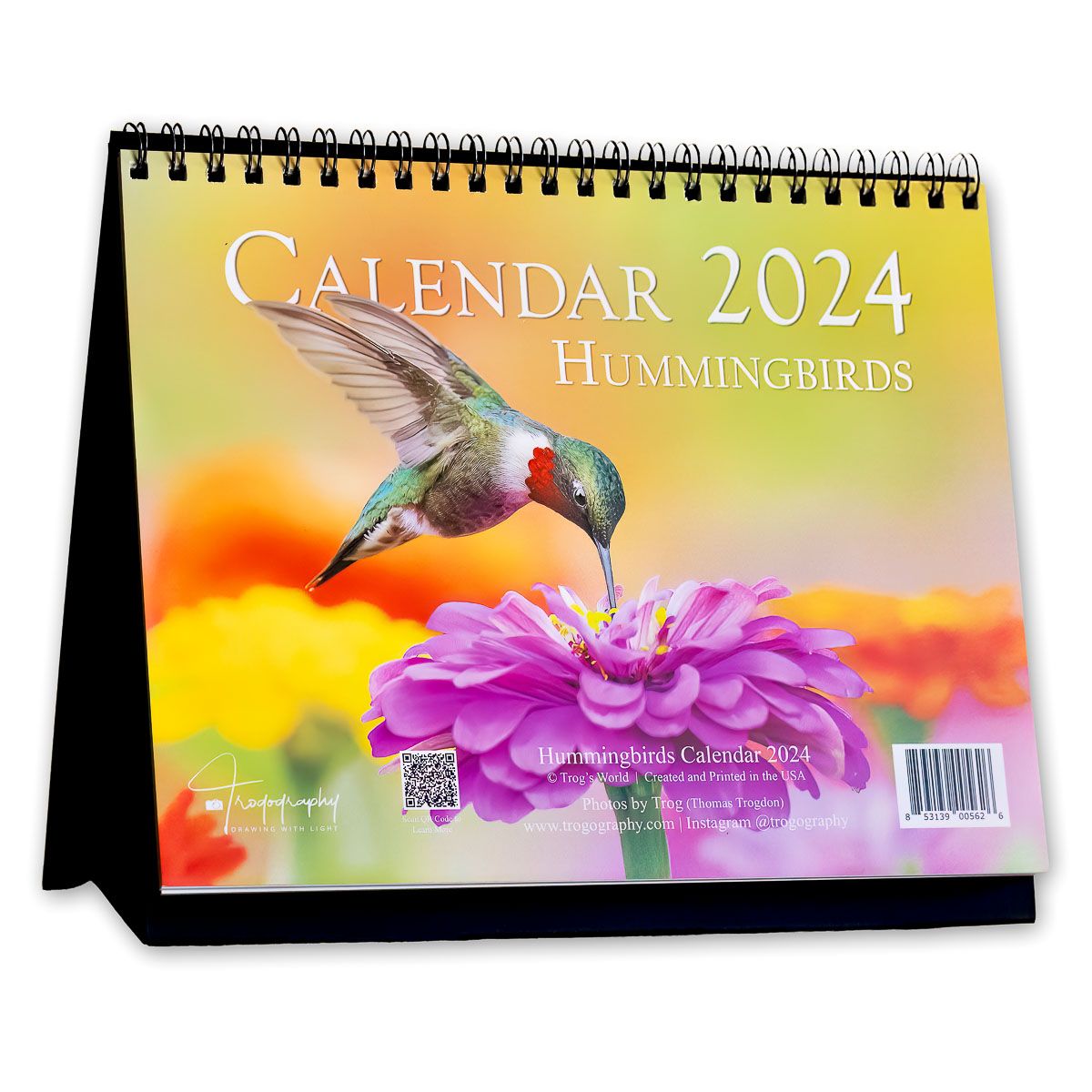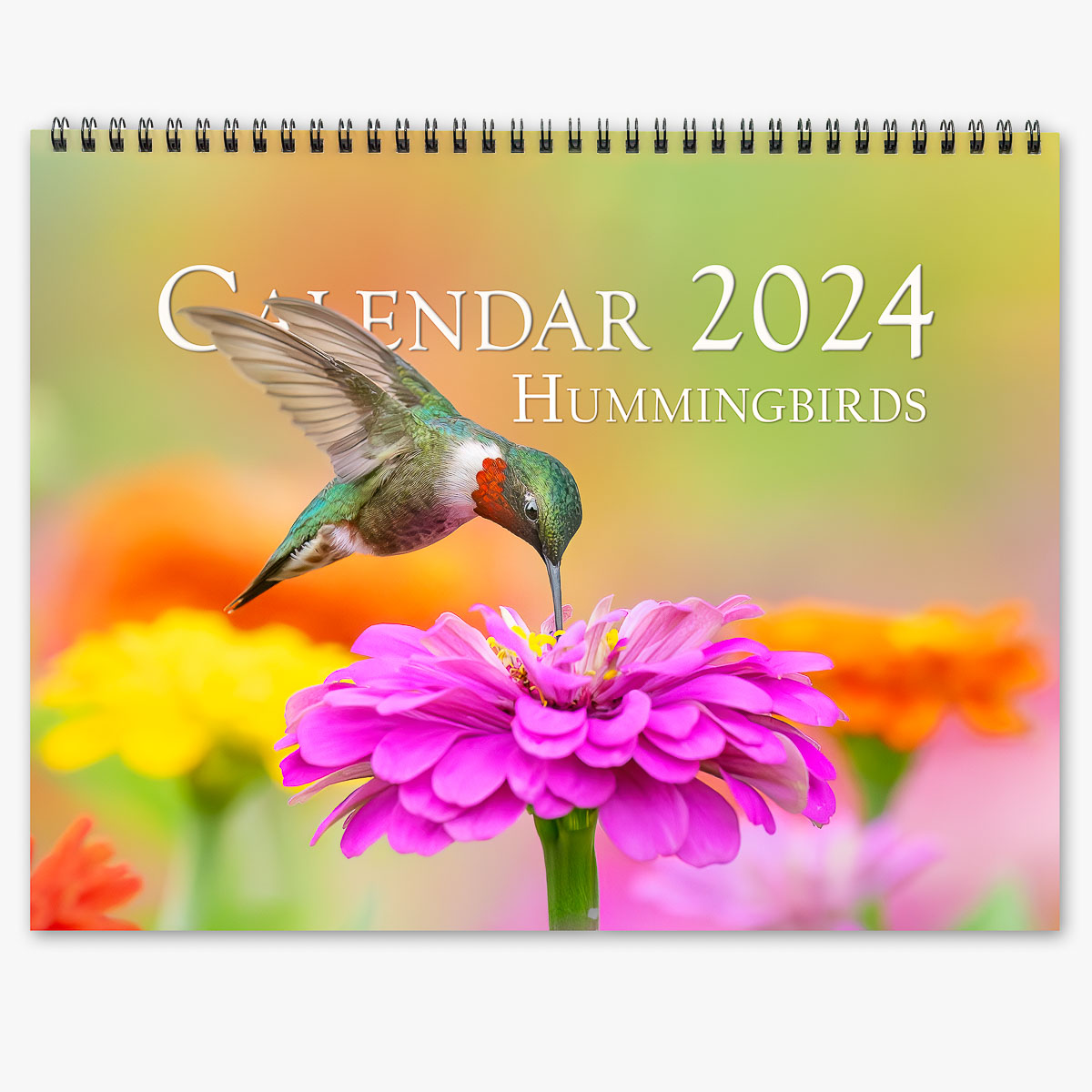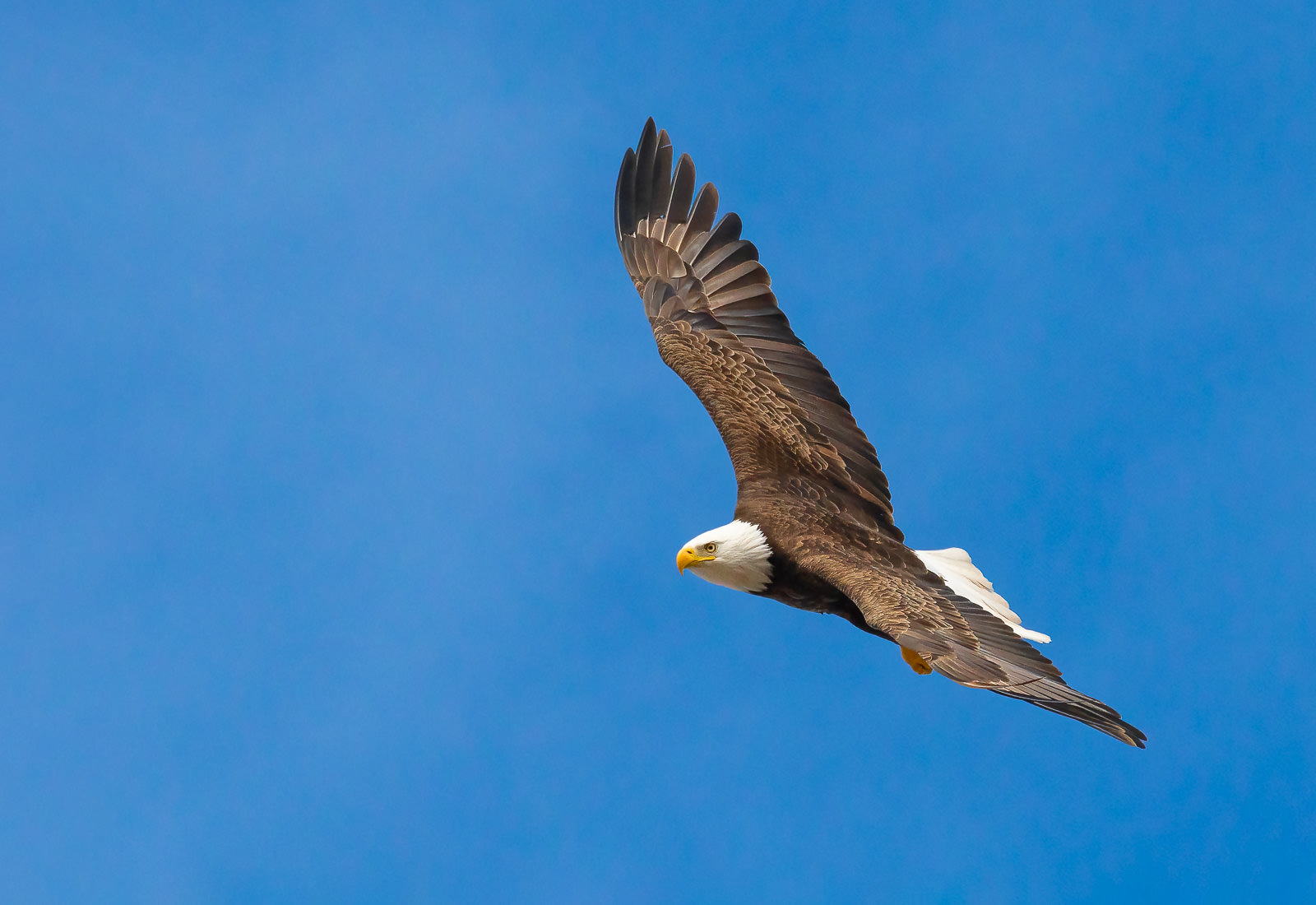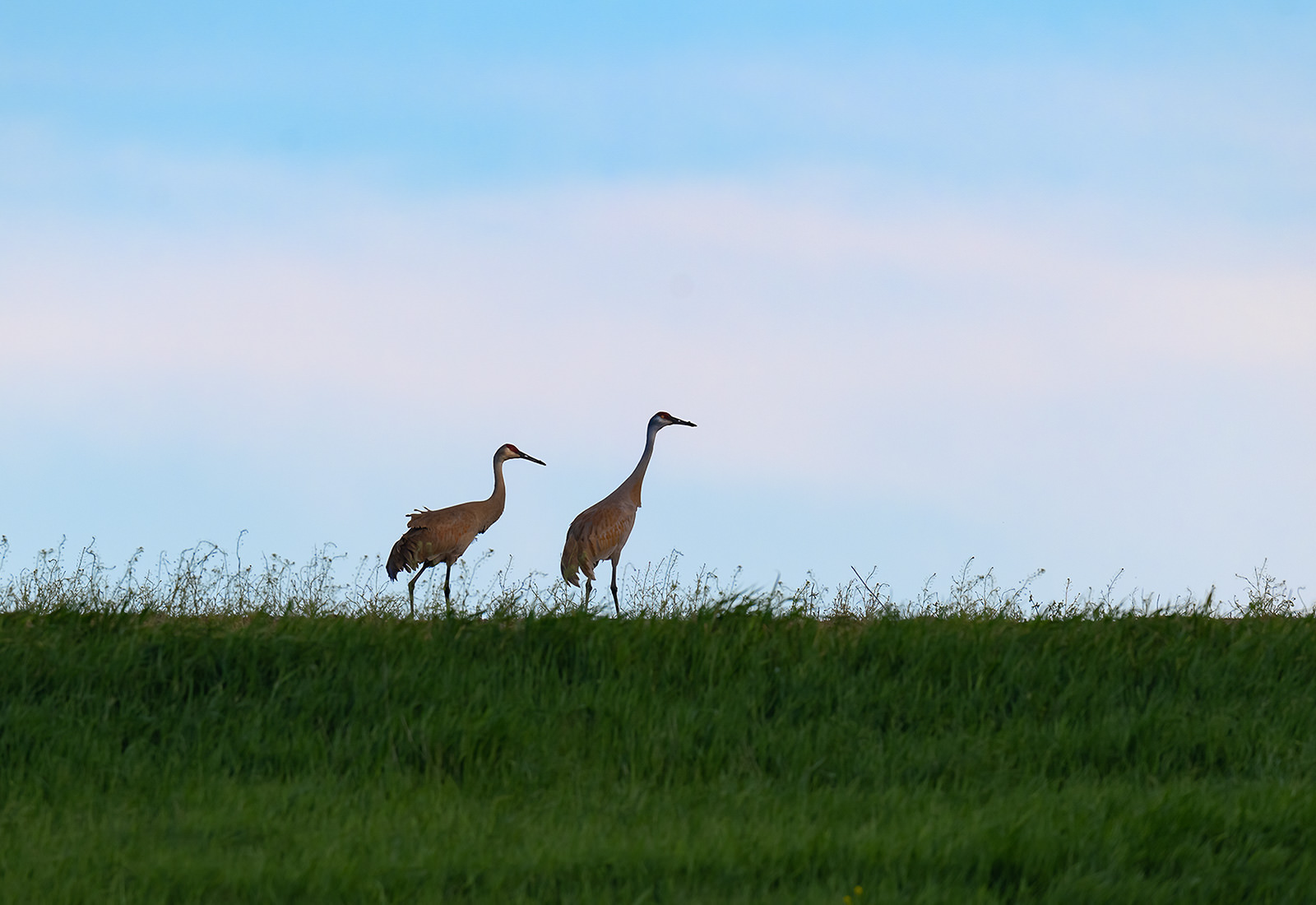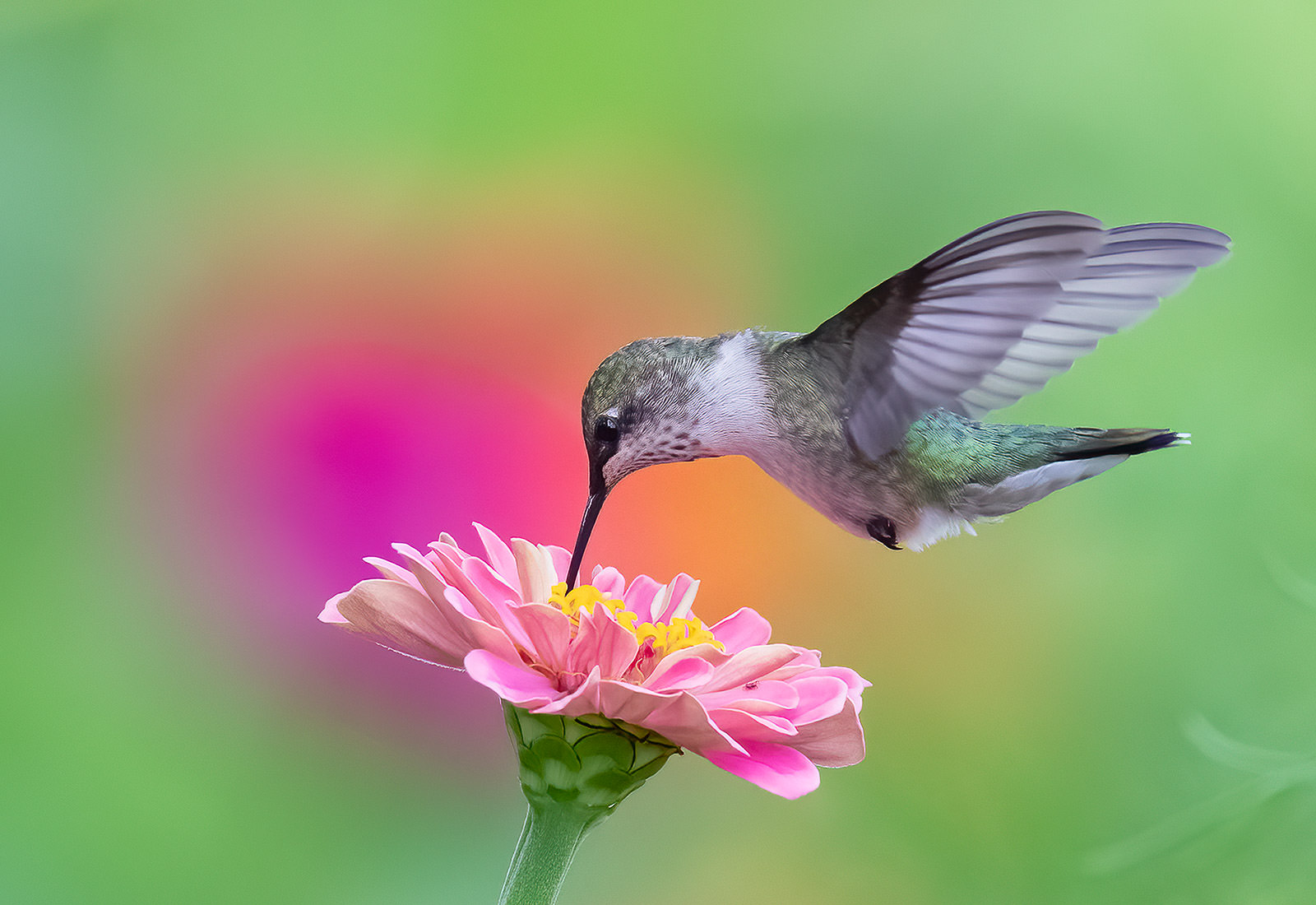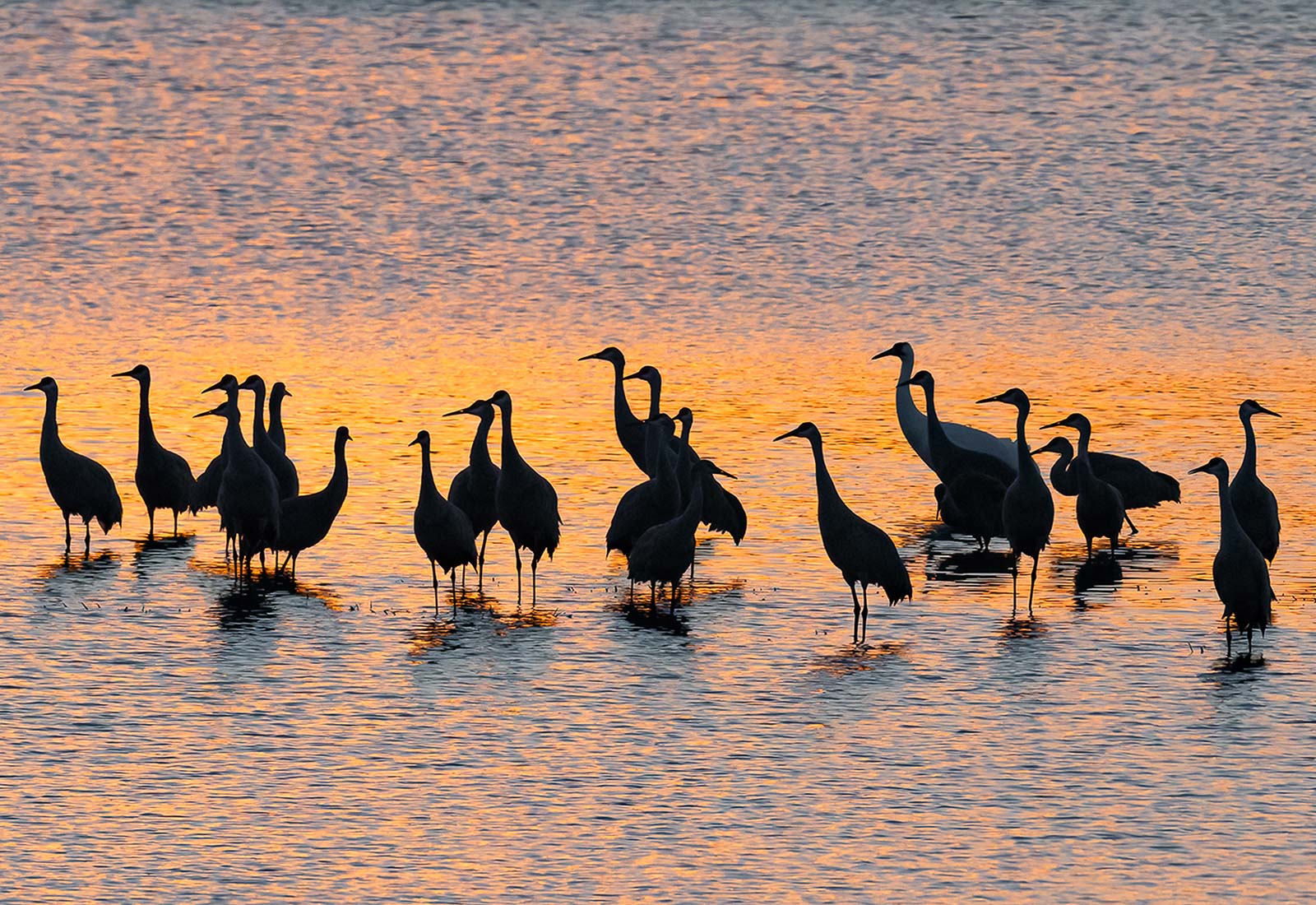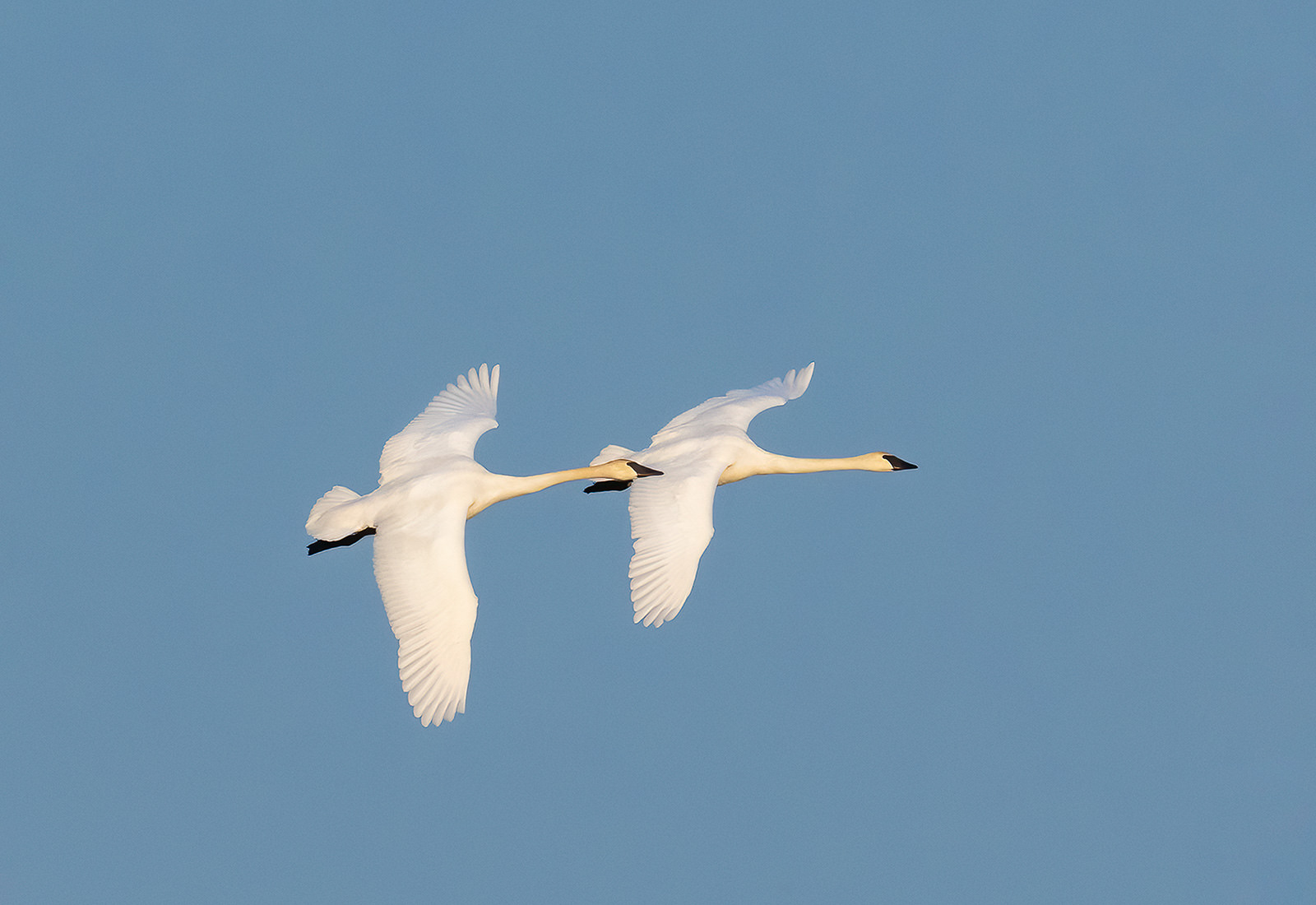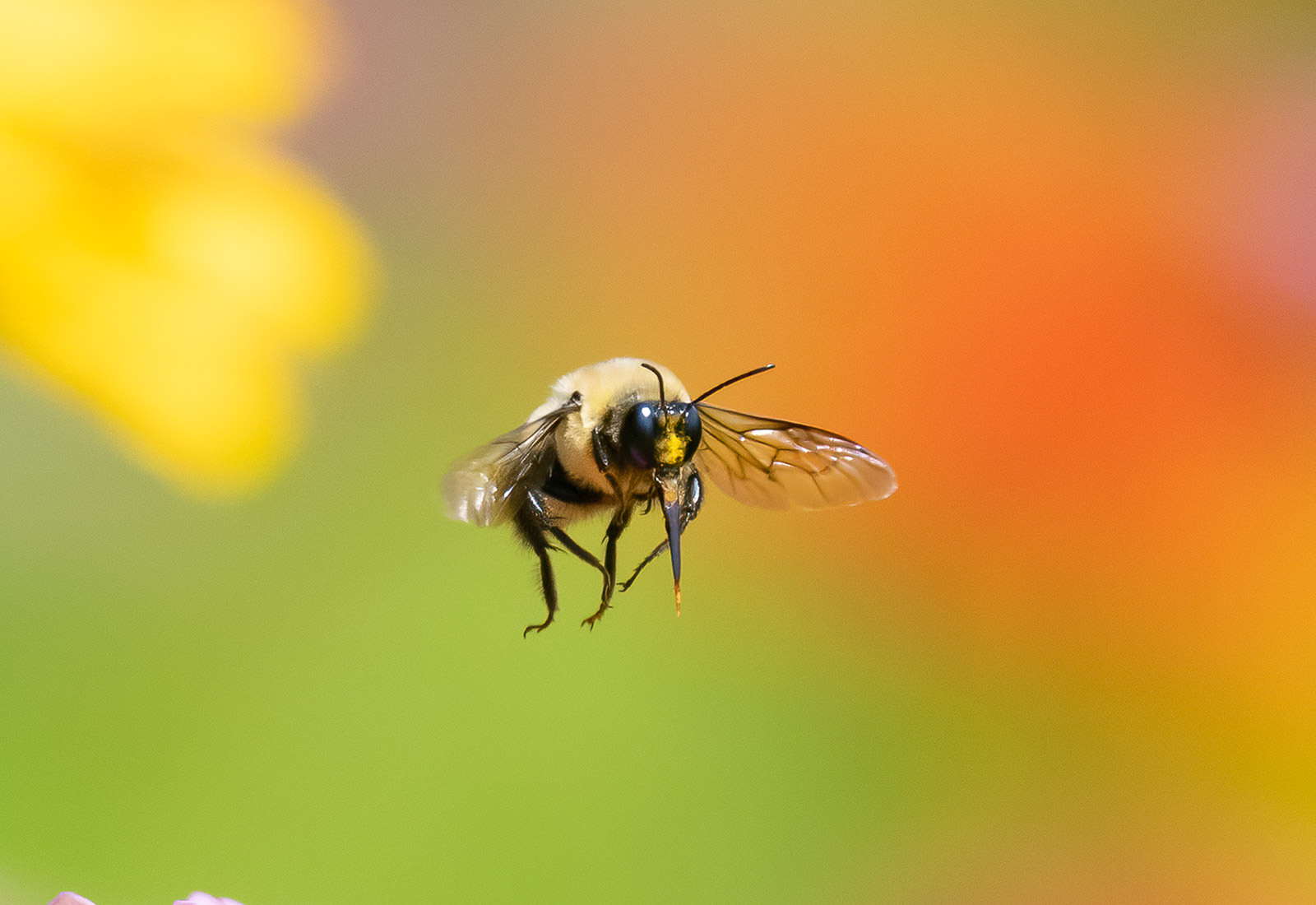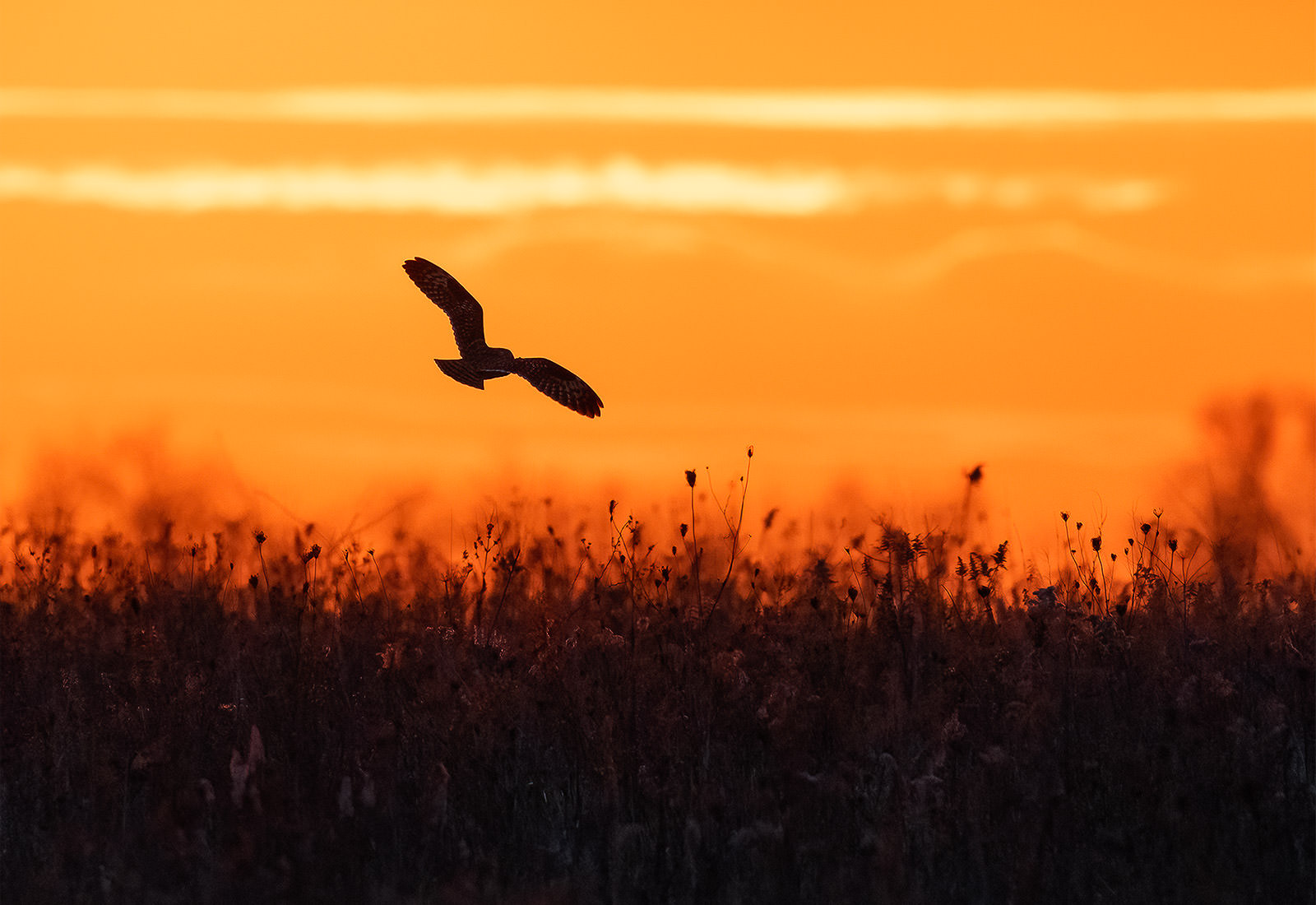October 2023
One interesting behavior I noticed after a successful catch is shown in this image. If the fish was on the smallish side, the eagle would slow down and bring the fish up to its beak and eat on the fly. That’s one way to avoid it being stolen! Both adults and juveniles would do this, and it took me a while to figure it out, but it makes perfect sense. Have a little sushi and then go hunt for another fish.
Did you know that by 1963 there were only 417 nesting pairs of bald eagles known to exist and the species was in danger of extinction. In 1782 there are anecdotal accounts stating the county may have had as many as 100,000 nesting eagles, so this was a dramatic reduction. However, the Bald Eagle is back and is an Endangered Species Act success story. For all of the details of the decline and the comeback, please read the article below from the U.S. Fish & Wildlife Service.
But there is another threat to Bald Eagles today: lead poisoning. Research has shown that lead toxicity in eagles and other avian scavengers is strongly correlated with deer hunting season as they are exposed to lead through ingestion of gut piles or unrecovered deer contaminated with spent ammunition. Please read the article below for more information and what we can do to fight lead poisoning in Bald Eagles. In short, replacing the lead ammunition with a non-lead option is a responsible choice.
U.S. Fish & Wildlife Service: Bald Eagle
The Raptor Center: The Issue (Lead Poisoning)
Bald Eagles along the Mississippi River in winter
When winter strikes hard in the upper Midwest and the Mississippi River freezes over, hundreds of bald eagles, young and old alike, congregate along the open waters near the locks and dams up and down the river in northwestern Illinois and eastern Iowa. It’s estimated as many as 2,500 bald eagles winter along the locks and dams (source: US Army Corps of Engineers), and there are plenty of opportunities to observe and watch our national symbol soar, dive, fight, eat and do those things that eagles do.
The images in this calendar were captured over a few days in late January and early February during an extended cold snap, and I don’t remember ever being so cold. With nothing to stop the northerly wind as it blew across the river ice, there was a limit to how much time could be spent shooting before having to take a break and warm up in the vehicle. But it was worth fighting the elements for this unique experience, and if you are an eagle enthusiast, it is highly recommended. According to the State of Illinois website Save our Eagles: “Every winter, Illinois presents visitors with the opportunity to see more than 3,100 bald eagles in their natural habitat – more wintering American bald eagles, in fact, than in any other state outside Alaska.”
The Geeky Stuff
For those interested in some of the behind-the-scenes info such as camera and settings, I’ve listed some specs below. With the advances in technology we’ve experienced with these picture-taking apparatuses over the last few years, all of the top brands can produce very fine photos. But I’ve been with Nikon for over 20 years now, and it is my go-to for captured moments.
For post-processing, Adobe Bridge, Raw, Photoshop and Lightroom are used to produce the final images. The eagles and the backgrounds are created by nature along with a long lens, wide aperture and a sometimes planned and sometimes lucky position of the eagle.
Camera: All of these images were captured with a Nikon Z9
Lens: 600mm Nikon F4 with 1.4 TC
Settings: Most apertures were F5.6 to F6.3, Shutter Speeds of 1/2500 to 1/4000, and ISOs anywhere between 1000 ISO to 5000 depending upon the time of day and available light.
Tripod: Images were captured with camera/lens on either a Gitzo monopod or tripod for stability.

